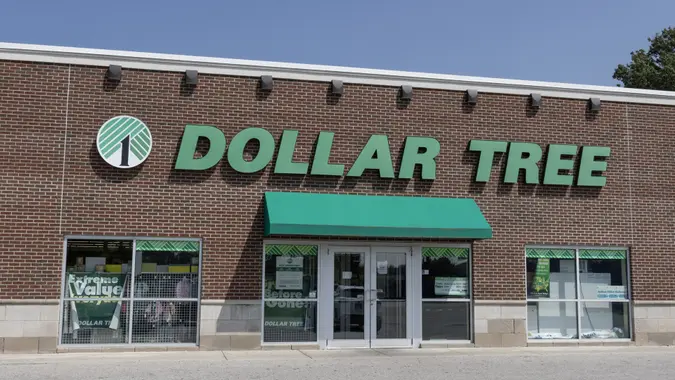5 Common Items in Your Home That You Didn’t Realize Are Costing You Money

Commitment to Our Readers
GOBankingRates' editorial team is committed to bringing you unbiased reviews and information. We use data-driven methodologies to evaluate financial products and services - our reviews and ratings are not influenced by advertisers. You can read more about our editorial guidelines and our products and services review methodology.

20 Years
Helping You Live Richer

Reviewed
by Experts

Trusted by
Millions of Readers
If you’re trying to find extra room in your budget, the answer might be right in front of you. Items in your home could be costing you money you didn’t realize you’re spending.
Being aware of these hidden expenses can allow you to make changes that save you money each month. Keep reading to learn where to look in your home to cut costs.
Small Appliances
You’re not constantly using appliances like your toaster, coffee maker, computer or television. However, if they’re plugged in, they’re still using energy, even when they’re turned off or in standby mode.
Defined as “standby power,” this consumes around 5%-10% of residential energy use, according to the U.S. Department of Energy. This could cost the average U.S. household up to $100 per year, so it’s time to consider unplugging these items.
Old Windows
If the windows in your home are old and drafty, they’re almost definitely letting heat out in the winter. This can increase your heating bill, because your heater has to work harder to keep your home warm. The same goes for cool air in the summer: It escapes through your old windows, and your air conditioner has to work harder.
Ideally, buying new windows is the answer. However, that can cost homeowners thousands of dollars and isn’t even an option for renters.
Instead, you can apply weatherstripping to seal up drafty windows. This can reduce your heating and cooling bills by more than 20%, according to the U.S. Department of Energy.
Washing Machine
Having a washing machine in your home is a luxury. However, if you’re primarily washing items in warm water, you’re using extra energy.
Generally speaking, water heating consumes approximately 18% of your home’s energy use — typically the second-largest expense in any home — according to the U.S. Department of Energy. Therefore, it’s advised to wash your clothes in cold water, with cold-water detergents as much as possible.
Unused Streaming Subscriptions
While not a tangible household object, streaming subscriptions are part of your household — and they cost money. If you’re like many people, you pay for subscriptions to several streaming platforms, but that doesn’t mean you’re actually using them.
Nearly half — 48.9% — of people have three streaming subscriptions simultaneously, according to a recent Forbes survey. This costs an average of $46 per month.
However, 27% of people hadn’t reviewed their subscription for at least a few months, with some only checking in during the past year and others not at all. A $15 monthly subscription might not seem like much, but it adds up to $180 over the course of a year.
Clutter
Nearly everyone has at least a few items in their home they really don’t need. If your level of clutter is on the low end, this probably isn’t a big deal, but the more you have, the more space you need.
For example, the average rent for a one-bedroom apartment in the U.S. is $1,557 per month, while a two-bedroom apartment rents for an average of $1,811 per month, according to Apartments.com. The difference is $254 per month, which totals $3,048 per year.
Therefore, if you have to rent a bigger apartment to accommodate all of your things — many that you don’t need — you may be costing yourself thousands of extra dollars per year.
 Written by
Written by  Edited by
Edited by 

























